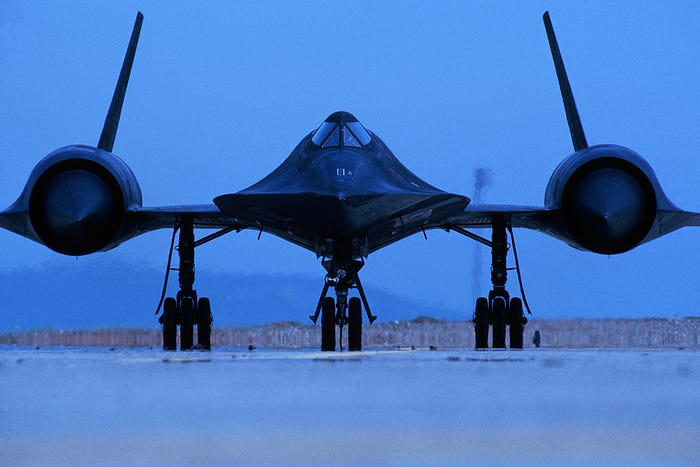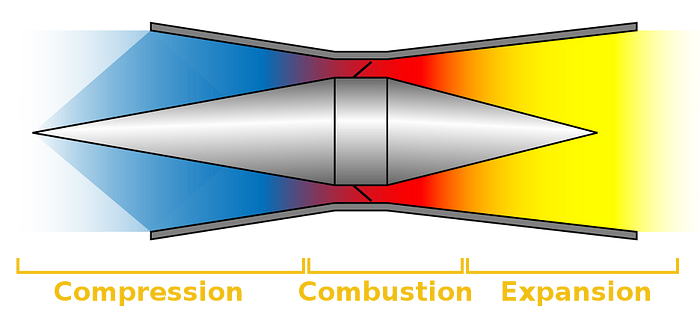An Overview of Ramjet and Scramjet Propulsion
Turbojet engines are wonderful until you want to fly at high supersonic or hypersonic speeds. At that point, ramjets (or even scramjets!) need to be used. Let’s take a look at how they function and how they differ from turbojets.

Ramjet
A ramjet engine is an air-breathing jet engine that requires no moving parts. Instead, it relies on the aircraft’s forward motion to draw external air into a specially shaped intake passage for compression and combustion.
The pressurization is caused by “ramming” the external air into the combustor using the aircraft’s high velocity. After passing through the shock cone, the air will move at subsonic speeds, ready for combustion. Unlike turbojet or turbofans, the pressurization of air is not generated using a compressor, which in turn makes the ramjet engine much lighter and simpler than turbojets. After combustion, the heated air will expand and be ejected out of the exhaust at high speeds, similar to a turbojet.

Ramjets are the most efficient at speeds higher than Mach 2. One thing to note: ramjets cannot produce static thrust; in simple terms, without the aircraft already moving at high speeds, ramjets cannot generate thrust since ramjets cannot compress air. As a result, some other propulsion systems must be used to accelerate the aircraft to a high enough speed where ramjets begin to produce thrust (some engines are even convertible from turbojet to ramjet). The higher the speed, the more efficient ramjets are — until the speed is so high that aerodynamic losses are a significant factor, which is around Mach 6.

Scramjet
A scramjet engine is a special type of ramjet engine where combustion happens with supersonic airflow. Whereas a regular ramjet engine uses a shock cone to reduce the speed of the intake air, a scramjet engine lets the supersonic air to be directly compressed. During supersonic combustion (hence the name scramjet), the airflow is then slowed by shockwaves from the ignition source.

Note: Scramjet engines can reach higher speeds than regular ramjet engines.
Have any other questions? Let me know in the responses below!

